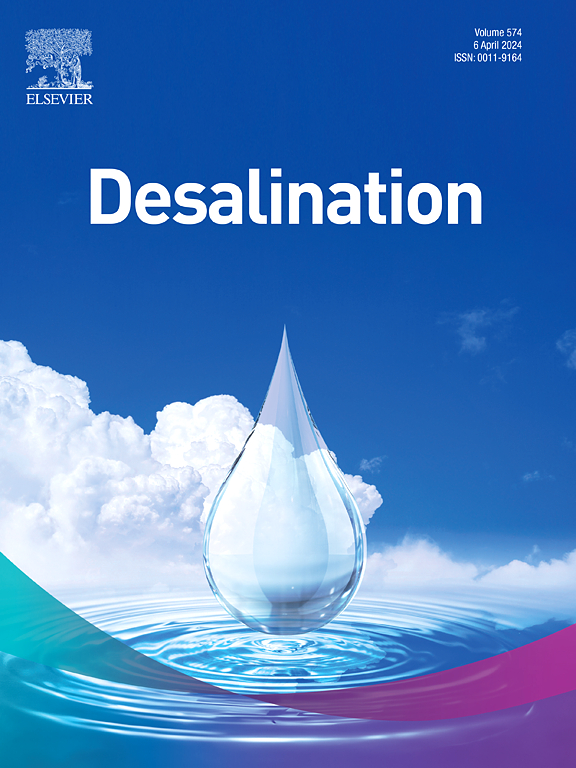An efficient superhydrophilic photothermal membrane of graphene-decorated TiO2 nanotube arrays for solar desalination
IF 8.3
1区 工程技术
Q1 ENGINEERING, CHEMICAL
引用次数: 0
Abstract
Light absorption and salt resistance are two primary factors for the performance of Interfacial Solar Driven Water Evaporation (ISDWE) technology. This paper presents a superhydrophilic photothermal membrane composed of graphene-modified titanium dioxide (GR-TiO2) nanotubes, which was prepared on a titanium mesh surface by anodic oxidation and electrochemical methods. The superhydrophilic nanostructured GR-TiO2 mesh, featuring a staggered tight-weaving structure, facilitates seawater transport and guides salt crystallization towards the mesh edges, preventing surface accumulation. The tubular structure with nanotube arrays on the titanium mesh and an inner cavity structure maximizes light trapping through both multiply scattering, and omnidirectionally absorbing the light. This synergy played by tubular structure and graphene generated more optical absorption, reaching 89.64 % in the entire solar spectrum. In the salt tolerance experiment, the system removed over 99 % of NaCl from the evaporated water, maintaining long-term membrane durability. At 17 wt% brine, salt crystallizes at both the edges and the centre of the GR-TiO2 membrane after a 10-h evaporation cycle, achieving a salt recovery rate of 225.55 g m−2 h−1. This study utilizes ISDWE technology to achieve integrated production of salt and fresh water, presenting a novel approach to address the issue of salt crystallization in solar desalination.

求助全文
约1分钟内获得全文
求助全文
来源期刊

Desalination
工程技术-工程:化工
CiteScore
14.60
自引率
20.20%
发文量
619
审稿时长
41 days
期刊介绍:
Desalination is a scholarly journal that focuses on the field of desalination materials, processes, and associated technologies. It encompasses a wide range of disciplines and aims to publish exceptional papers in this area.
The journal invites submissions that explicitly revolve around water desalting and its applications to various sources such as seawater, groundwater, and wastewater. It particularly encourages research on diverse desalination methods including thermal, membrane, sorption, and hybrid processes.
By providing a platform for innovative studies, Desalination aims to advance the understanding and development of desalination technologies, promoting sustainable solutions for water scarcity challenges.
 求助内容:
求助内容: 应助结果提醒方式:
应助结果提醒方式:


